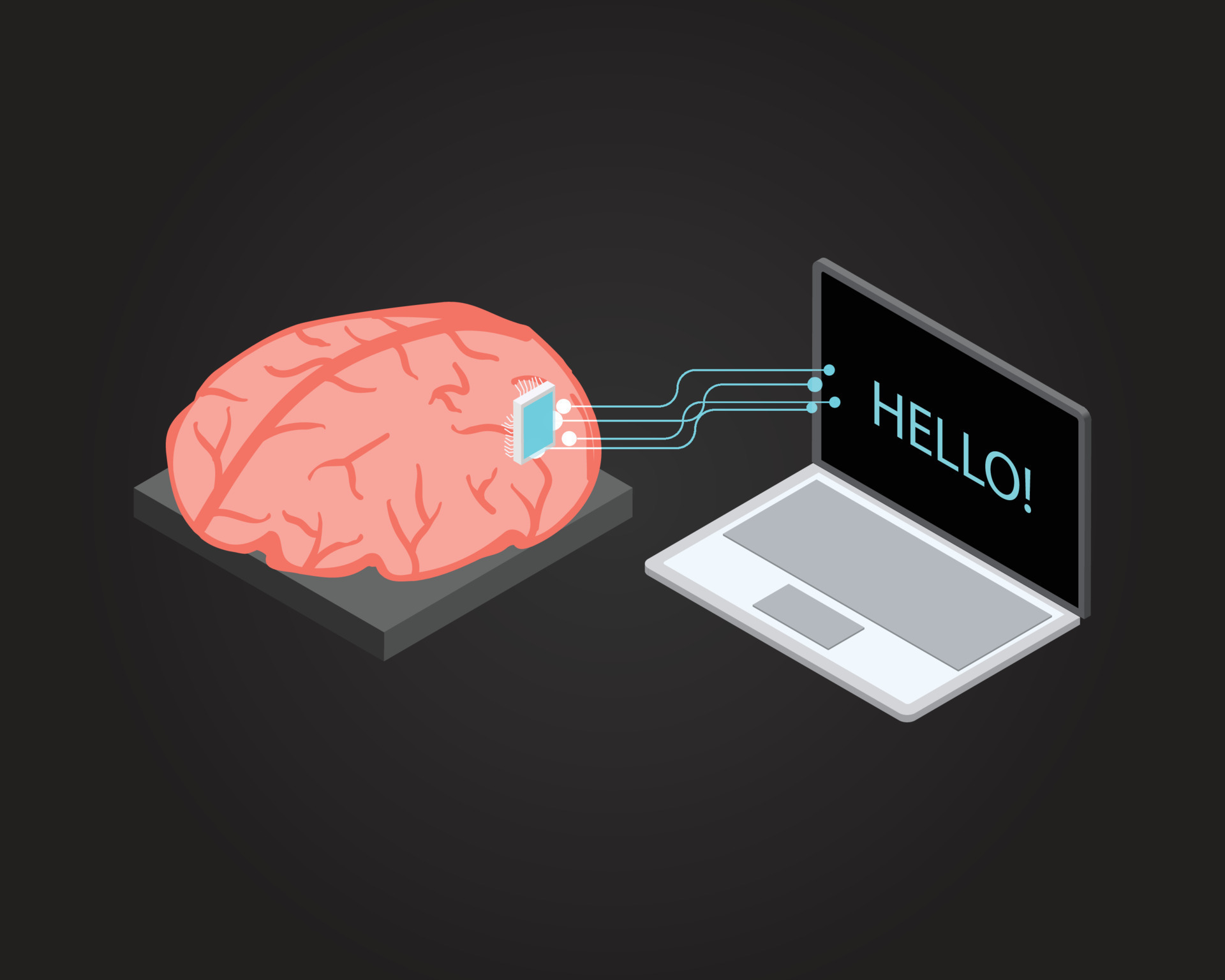Unveiling Neuralink: The Revolutionary Brain-Machine Interface Transforming The Future - Explore the groundbreaking developments of Neuralink, a brain-machine interface technology that promises to revolutionize the way we interact with technology and treat neurological disorders.
Editor's Notes: "Unveiling Neuralink: The Revolutionary Brain-Machine Interface Transforming The Future" have published today date. Given the rapid advancements in this field, understanding Neuralink's potential impact is crucial for staying informed about cutting-edge technologies shaping our future.
Through extensive analysis and research, we present this comprehensive guide to Neuralink, deciphering its functions, applications, and implications for the medical and technological landscapes.
Key Differences: Neuralink vs. Traditional Brain-Machine Interfaces
| Feature | Neuralink | Traditional Brain-Machine Interfaces |
|---|---|---|
| Invasive Nature | Minimally invasive with thin, flexible threads | Highly invasive with large electrodes implanted directly into the brain |
| Channel Count | Thousands of channels | Limited number of channels (typically less than 100) |
| Accuracy and Specificity | Precise targeting of specific brain regions and neurons | Lower accuracy and specificity due to larger electrode size |
Main Article Topics:
FAQ
Welcome to the frequently asked questions section. Here, we aim to address common concerns, misconceptions, and provide additional insights about Neuralink, the groundbreaking brain-machine interface.
![[:en]Evolution of the Human-Machine Interface: Transforming the Future [:en]Evolution of the Human-Machine Interface: Transforming the Future](https://institucional.me.com.br/wp-content/uploads/2024/08/Armando-V-N.png)
[:en]Evolution of the Human-Machine Interface: Transforming the Future - Source institucional.me.com.br
Question 1: What is Neuralink's primary focus?
Neuralink is primarily dedicated to developing and refining a brain-machine interface (BMI) system. This system aims to establish a seamless connection between the human brain and computers or other devices.
Question 2: How does Neuralink's BMI system function?
The BMI system involves implanting tiny electrodes into specific brain regions. These electrodes monitor and record neural activity, allowing for bidirectional communication between the brain and external devices.
Question 3: What are the potential benefits of Neuralink's technology?
Neuralink's technology offers a wide range of potential benefits, including restoring lost motor function, treating neurological disorders, enhancing human capabilities, and facilitating direct communication with machines.
Question 4: Are there any safety concerns associated with Neuralink's implants?
Neuralink's implants are designed with safety and biocompatibility in mind. The company employs rigorous testing and research to ensure the implants' safety and minimize potential risks.
Question 5: What is the current stage of Neuralink's development?
Neuralink is actively conducting research and development and has made significant progress in testing its BMI system on animals. The company aims to eventually conduct clinical trials in humans, but the timeline for this is still subject to regulatory approval and further research.
Question 6: What are the ethical implications of Neuralink's technology?
Neuralink recognizes the ethical considerations surrounding its technology and actively collaborates with ethicists and neuroscientists to address these issues. The company is committed to using its technology responsibly and transparently for the benefit of humanity.
In conclusion, Neuralink's brain-machine interface technology holds immense potential for transforming healthcare, enhancing human capabilities, and expanding our understanding of the brain. As research and development continue, it is crucial to engage in ongoing discussions about the potential benefits and ethical implications of this technology.
Transition to the next article section.
Tips
For more information, consult the article: Unveiling Neuralink: The Revolutionary Brain-Machine Interface Transforming The Future
Neuralink's groundbreaking technology,

Caltech’s Pioneering Ultrasound Brain–Machine Interface - Lifetech News - Source lifetech.news
a brain-machine interface, offers remarkable potential to enhance human capabilities and improve healthcare outcomes. By integrating with the human brain, Neuralink can record and stimulate neural activity, allowing for a range of innovative applications.
Tip 1: Enhancing Cognitive Abilities
Neuralink can interface with the brain's memory and learning centers, facilitating cognitive enhancement. It can store and retrieve information directly into the brain, improving memory recall and learning efficiency.
Tip 2: Treating Neurological Disorders
Neuralink's precise stimulation and recording capabilities enable it to modulate brain activity, potentially offering therapies for neurological disorders such as Parkinson's disease, epilepsy, and chronic pain.
Tip 3: Creating Direct Brain-Computer Communication
Neuralink's interface allows for communication directly between the brain and external devices. It can decode neural signals from the brain and transmit them to computers, potentially enabling the control of prosthetic limbs, smart home appliances, and other technology.
Tip 4: Unlocking New Sensory Experiences
Neuralink's technology can stimulate and record neural pathways responsible for vision, hearing, and touch. This capability could restore lost sensory functions, enhance existing ones, and potentially create entirely new sensory experiences.
Tip 5: Monitoring and Optimizing Brain Health
Neuralink's long-term monitoring capabilities can track brain activity patterns, detect anomalies, and provide early warnings of potential health issues. This continuous monitoring can enable proactive interventions and improve overall brain health.
Summary
Neuralink's revolutionary brain-machine interface technology has the potential to transform healthcare, enhance human capabilities, and unveil new frontiers in neuroscience. By understanding and leveraging these tips, we can harness the full potential of this groundbreaking technology.
Unveiling Neuralink: The Revolutionary Brain-Machine Interface Transforming The Future
Neuralink, a brain-machine interface (BMI) company, has been at the forefront of unveiling groundbreaking technologies that have the potential to revolutionize the field of neuroscience and transform the future of healthcare. Neuralink's technology aims to establish a seamless connection between the human brain and external devices, opening up a realm of possibilities for treating neurological disorders, enhancing human capabilities, and exploring new frontiers in human-computer interaction.

Neurotechnology concept, impulse neural network, neuralink or brain - Source www.pinterest.com
- Medical Advancements: Treatment of neurological conditions like Parkinson's and epilepsy
- Enhanced Capabilities: Augmenting human senses and cognitive abilities
- Communication Revolution: Facilitating communication for individuals with speech and motor impairments
- Motor Control Restoration: Restoring motor functions in paralyzed individuals
- Cognitive Enhancement: Improving memory, attention, and decision-making
- Ethical Considerations: Exploring the ethical implications and societal impact of BMIs
The impact of Neuralink's technology extends far beyond the realm of medicine. It has the potential to reshape the way we interact with the world, from controlling external devices with our minds to creating immersive virtual experiences. The ethical considerations surrounding BMIs, such as data privacy, security, and potential misuse, must be carefully addressed to ensure their responsible and beneficial use. As Neuralink continues to refine its technology and conduct clinical trials, the future holds immense promise for this revolutionary brain-machine interface to transform healthcare and countless other aspects of human life.

brain computer interface or brain machine interface is a direct - Source www.vecteezy.com
Unveiling Neuralink: The Revolutionary Brain-Machine Interface Transforming The Future
Neuralink, a company dedicated to advancing brain-machine interfaces (BMIs), has unveiled groundbreaking technology with the potential to revolutionize healthcare, communication, and human capabilities. Neuralink's BMI devices aim to seamlessly connect human brains to computers, enabling control over external devices, communication, and even the restoration of lost motor and sensory functions.
Neuralink's technology is based on ultra-thin threads, each thinner than a human hair, implanted directly into the brain. These threads contain electrodes that record and stimulate neural activity, allowing for real-time communication between the brain and external devices.
The implications of Neuralink's technology are vast. For individuals with paralysis or other severe motor impairments, BMIs could provide a means of controlling wheelchairs, prosthetics, and other assistive technologies. In the field of medicine, BMIs could facilitate real-time monitoring of brain activity for early detection and intervention in neurological disorders such as epilepsy and Parkinson's disease.
Conclusion
As Neuralink continues to advance its technology, the possibilities for improving human health and abilities are limitless. However, ethical and societal implications must be carefully considered as BMIs become a reality. Ongoing research and thoughtful discussion will be crucial to ensure that Neuralink's technology is harnessed for the benefit of humanity.